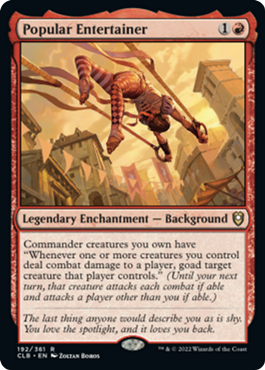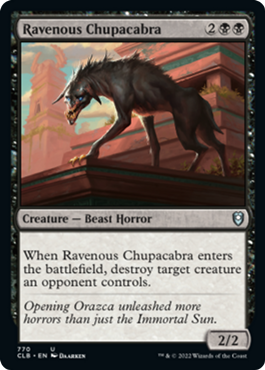Booster Drafts have been one of the most popular ways to play Magic: The Gathering since the game’s inception. Played everywhere from the most casual of kitchen tables all the way to the Magic World Championship, draft is a format that really does have something for everyone.
However, it’s not quite as simple as picking up some cards and playing a game. There’s a process and strategy behind drafting. And whether you’ve passed a few packs or never even tried, here’s are the first steps to take in becoming a draft expert.
What is Draft?
Draft is a format in Magic that falls under the “Limited” umbrella. This means players only use cards that they open during an event as opposed to a preconstructed deck. Draft isn’t just about opening a few packs and playing with what you open, though (that’s called “Sealed”). You need to interact with other players a little bit throughout the process.
How does draft work?

At the start of a typical Draft, you sit at a table with (ideally) seven other players. Each player in this “pod” has three packs.
When the draft starts, everyone opens one of their packs, takes one card from it and passes the rest to the player on their left, face down. You then pick up the pack passed from your right, pick a card from that pack and pass the remaining cards to your left. You repeat this process until you’re passed a single card from the person on your right. You add this to your pile of picked cards.
Once the first pack is completed, everyone opens their second pack. You continue in a similar way to the first pack, except you pass the cards to your right and receive from the left instead. The final pack works pretty much the same, except you’re passing to your left and receiving from the right again. Once all three packs are done, which likely takes about 15 to 20 minutes, you’ll have a pile of 45 cards, 15 from each pack, to build your deck with.
This may sound very complicated, but it really isn’t. The process makes a lot of sense once you sit down and try it. Plus, Limited players are some of the friendliest around, in my experience, and they’ll likely be happy to help you out if you’re not sure about something.
Building your deck
So, you’ve got your pool of 45 cards and now you need to build a deck. What does a Limited deck look like?
Your deck needs to have a minimum of 40 cards, and it’s generally recommended to not go over this number. Draft decks typically want 17 lands and 23 non-land cards. You have access to as many basic lands as you need in Draft (the store will have a box with basics for you to borrow, but some dedicated drafters like to use their own, special lands). This means you don’t generally need to worry about drafting lands.
Your 23 non-land cards want a good number of creatures. 13 to 18 is the generally recommended range, with removal spells, combat tricks and other types of cards taking up the remaining spots. Some decks run more creatures than this, which might be the right move for certain strategies. These numbers are all just starting guidelines.
Top tips for drafting
If you ask any Limited fan what their top five tips for drafting are, you’ll probably get a different answer from each player. Everyone has their own strategies, but the advice below should be just enough to give you a head start.
1. Have fun
If it didn’t go without saying, I wanted to be sure this tip went at the top so you can read the rest with this in mind, It sounds a little corny and trite, but fun should be a key part of Drafting. While the format may carry a prestigious reputation at the highest, competitive levels that can seem intimidating from a distance, Drafts at the store level are often pretty casual.
Yes, players do play to win—but they’re just as likely to build around one silly rare they open early in the Draft. There’s a reason why Draft is so popular, and that’s because there’s as much fun to be had as there is strategic depth.
2. Read up on the set
My first and biggest recommendation for someone going to their first Draft is to look at the set. You don’t have to know absolutely every card and what they work well with, but knowing at least some overall themes goes incredibly far in helping you make sure your deck plays as you intend it to.
Each set has its own “archetypes” (themes for each color combination) that can vary from set to set. For example, Izzet often has a spells-matter archetype, but it might care about wizards or drawing cards in some sets.
Luckily, there are plenty of resources to help you with this. Content creators beaver away to create set primers in all sorts of formats for every set, from 10-minute overviews to three-hour, card-by-card analyses. But don’t worry too much about that, because you get a lot out of the first five to 10 minutes looking into a set.
For example, you can find a list of tier lists, guides and practice resources here.
3. Rating cards
There’s a lot that goes into determining which card is the best one to choose when you’re picking from a pack. This is where your skill rating cards comes in.
As with other aspects of drafting, everyone has their own thoughts on what should influence your picks. The classic version of this is B.R.E.A.D. (bombs, removal, evasion, aggro, and dross), but this had some high profile critics in recent years.
Three things I’d say you should go for as a newer player are cards that look powerful, cheap removal, and (to a lesser extent) evasive creatures.
A classic example of a card that was an absolute bomb at uncommon is Ravenous Chupacabra in Rivals of Ixalan. Yes, it might be a four mana 2/2, but a decent body attached to a cheap and unconditional removal spell is a very efficient card.
4. Choosing Colors
Choosing colors is potentially one of the trickier parts of drafting. What happens if you’re taking cards in specific colors, but suddenly there’s none left to choose halfway through your first pack because everyone else is taking the same thing? Well, this is actually part of the fun of Draft.
Nobody is expecting you to pick up the skill of choosing your colors on the fly overnight. Even experienced players have trouble with it sometimes.
The best advice I can give when starting out is to try and center your picks in your first pack to a particular color if you’re playing a “normal,” two color format. Then you have a solid base in that color when you go into your second and third packs, and you can pick your second color based on what you see coming around. It won’t work every time, but it’s a good place to start.
5. Curve
When you build your deck (and when you’re choosing your cards, to be fair), you’re going to want to think about your mana curve. This refers to how many spells you have at each mana value. You could have a deck full of fantastic six drops, but you’re unlikely to still be alive if you don’t have anything to do until turn six.
The above graphic is a good guide to what your curve should look like. You’ll want the majority of your deck to be between two and four mana, with a decent chunk being creatures.
More aggressive decks will have more in the twos and threes while slower decks will generally have more at higher mana values. Each deck is its own thing, but you still need to think about this.
6. Discuss
The beauty of playing in person is you’re playing with real people. They all experienced the same Draft pod, even if they didn’t see exactly what you did (and they’ll have seen the same cards getting passed around). Talking about how individual decks played and what they could have done differently or asking about other players’ thoughts on a format are all great learning tools.
And there are still opportunities to discuss drafts if you’re playing online. Social media is full of other Magic players who want to discuss decks, give advice and get feedback.
Where can I learn more?
There are some fantastic resources available out there for developing your skill in drafting.
The classic example here is Limited Resources, one of the original MTG podcasts with weekly episodes that covers everything from set reviews to skill level-ups to set-specific strategies. A lot of the language we use to talk about Limited gameplay comes from LR. It’s a resource that’s difficult to ignore with more than 650 episodes in their catalogue.
But my go-to these days is Lords of Limited. They put their own spin on the Limited podcast format and perform mathematical analysis on the set as a whole as part of their set reviews. They also run a fantastic series called “50 takes in 50 minutes” where they summarize a set at the end of the format, which is my first recommendation for anyone returning to a Draft format years after it’s been regularly drafted.
Other sources I’d recommend are Mystical Dispute, Draft Chaff, and Draft Punks. These cover the whole spectrum of Draft mentalities, from competitive content to stuff directed at the more casual side of Limited. I’d also be remiss not to mention my own YouTube channel, Pass Left Drafts. This videomight be of some interest to any players that are looking at the very basics of Draft:
Finally, if you play on Arena, then having a draft helper by your side can save you from being completely clueless. I recommend giving Arena Tutor by Draftsim a try.
End step
That just about does it for your first lesson in the world of Draft. All I can do now is encourage you to give it a go and reiterate that the best way to learn this is by doing.
I’d love to hear how you get on with your Drafts. And if you have any questions, be sure to ask them in the comments below. Good luck and may your rares be bombs!




